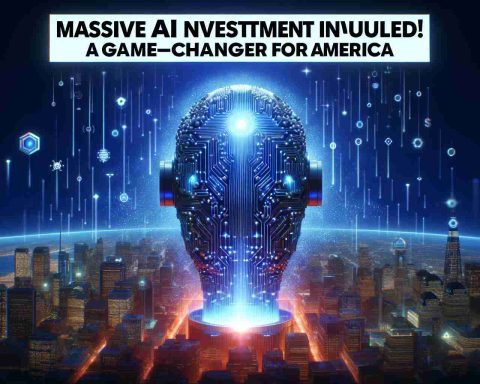The rapid advancement of artificial intelligence (AI) is significantly altering the landscape of the job market in Canada. Recent research from Statistics Canada outlines how various professions are expected to navigate the changes brought about by AI. While some roles may thrive, others may face considerable setbacks.
Healthcare professionals, including general practitioners and specialists, are likely to benefit from this technological shift. Their extensive training and expertise allow them to work alongside AI effectively, making it challenging for machines to replace them entirely. Similarly, educators like teachers and administrators will likely retain their significance, as the emotional and interpersonal aspects of education are not easily replicated by AI.
Fields like engineering show promise as well, particularly for electrical and mechanical engineers. These roles require creativity and problem-solving skills that AI assists rather than substitutes.
However, the research indicates that certain positions may be at a disadvantage. For instance, high-skilled jobs in programming and office administration are particularly susceptible to AI advancements. As AI technology develops, it has the potential to automate tasks traditionally performed by humans in these roles.
Overall, while some workers are more likely to adapt and thrive in this evolving environment, others may struggle as AI continues to integrate into various sectors. The ability of AI to complement or replace tasks will largely determine the future of different professions in Canada.
The Impact of AI on Employment in Canada: Navigating the Challenges and Opportunities
As artificial intelligence (AI) continues to evolve, its implications for the job market in Canada are becoming increasingly complex. Beyond the immediate effects on certain professions, AI is redefining the nature of work itself, including skill requirements and workplace dynamics. Understanding these shifts is crucial for workers, employers, and policymakers alike.
Key Questions Surrounding AI and Employment
1. What sectors are most affected by AI?
AI is poised to influence diverse sectors, including manufacturing, finance, retail, and agriculture. From robotics in manufacturing to AI-driven analytics in finance, many industries are being transformed by smarter technologies.
2. How can workers prepare for the changes?
Lifelong learning and upskilling are essential for workers to remain relevant in an AI-driven job market. Engaging in continuous development in areas like data literacy, digital skills, and emotional intelligence can create new opportunities for workers.
3. What role do government and policy play?
Policymakers must focus on creating frameworks that support worker transition, such as retraining programs and income support for displaced workers. Understanding the economics of AI implementation will greatly inform effective legislation.
Key Challenges and Controversies
AI adoption presents numerous challenges and sparks significant debate. One of the most pressing issues is job displacement. While AI can enhance productivity, it raises concerns over unemployment rates, particularly for low-skilled workers. The fear that AI will disproportionately affect certain demographics, exacerbating existing inequalities, is being widely discussed.
Moreover, there are ethical considerations regarding AI decision-making processes. Questions arise about transparency, bias, and accountability in systems that can affect hiring practices and workplace dynamics. Addressing these concerns is critical to ensure that AI growth is equitable and just.
Advantages of AI Integration in the Labor Market
1. Increased Efficiency: AI can streamline operations and improve productivity, allowing businesses to operate more effectively. Automation of repetitive tasks frees up human workers for more strategic roles.
2. Innovation and New Job Creation: The rise of AI is leading to the creation of entirely new job categories, such as AI trainers, data scientists, and machine learning engineers. These roles require advanced skill sets and can offer high remuneration.
3. Enhanced Safety in High-Risk Jobs: In sectors like construction and mining, AI and robotics can perform hazardous tasks, reducing the risk of injury to human workers.
Disadvantages to Consider
1. Job Displacement: Automation threatens many traditional jobs, particularly in sectors that involve routine tasks. Workers in these areas may find it difficult to transition to new roles without targeted training.
2. Cost of Implementation: Smaller businesses may struggle to invest in AI technologies due to high initial costs. This discrepancy could widen the gap between large corporations and small enterprises.
3. Dependence on Technology: As organizations increasingly rely on AI, there is a risk of diminishing human oversight, which can lead to potential mistakes or biases in decision-making processes.
Conclusion
The interplay between AI and employment in Canada represents a pivotal transition for the workforce. By fostering a culture of continuous learning and involving stakeholders in policy discussions, Canada can navigate the complexities that AI brings to the job market. Proactive steps will help ensure that the workforce is equipped to thrive amidst these changes, ultimately benefiting the economy and society as a whole.
For further information on employment trends and AI implications in Canada, visit Statistics Canada.
















